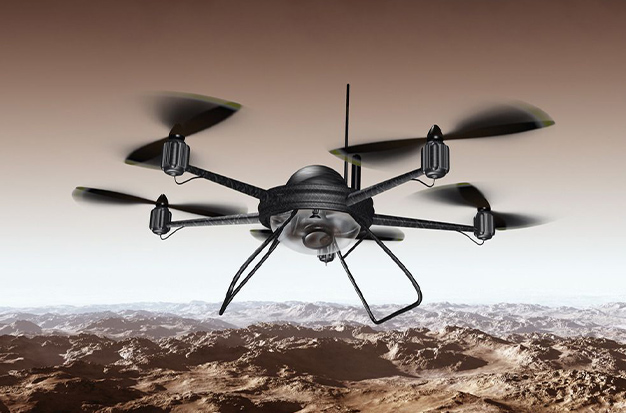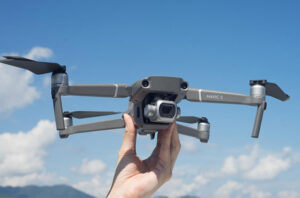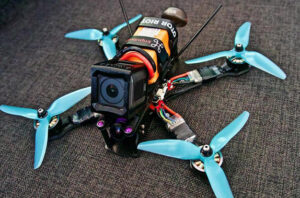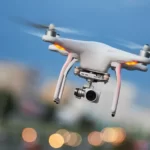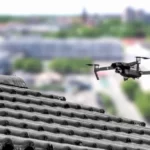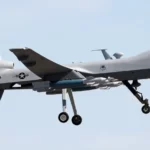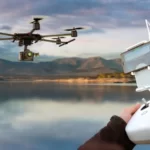When you hear the word “drone,” what comes to mind?”When was the first drone created? Today, there are numerous uses for drones, including small-item delivery, industrial site inspections, infrastructure monitoring, mapping, crop monitoring, emergency response, and security surveillance. As more and more industries learn how drones can help their businesses, the use cases seem to have no end. Furthermore, as global regulators start collaborating with key players in the industry to permit more complex operations, as is the case in the US with the newly established beyond visual line of sight aviation rulemaking committee, this trend is only expected to continue.
However, when they first entered the market, drones were only used for military applications.
For a better understanding of how the drone industry developed into what it is today, let’s examine the history and various applications of drones since they were first used.
Table of Contents
What Is A Drone?
Unmanned aerial vehicles (UAVs) are known as “drones” in new usages. To put it another way, the aircraft that can operate without an onboard pilot. For our purposes, a drone industry technology will be divided into two classes: drones that call for a human operator to direct its missions and autonomous drones, which don’t.
Drones have been used for photography, safety, security, and environmental programs ever since they were first used in the middle of the 1800s. But the development of drone technology was facilitated by war. Army units were among the first in the world to realize the potential benefits drones could bring to military strategies and to work on growing the industry.
Who Created The First Drone, And When?
Abraham Karem created the first contemporary drone in his garage. The drone – code named Albatross – led to the development of the modern Predator drone used by the US Air Force today.
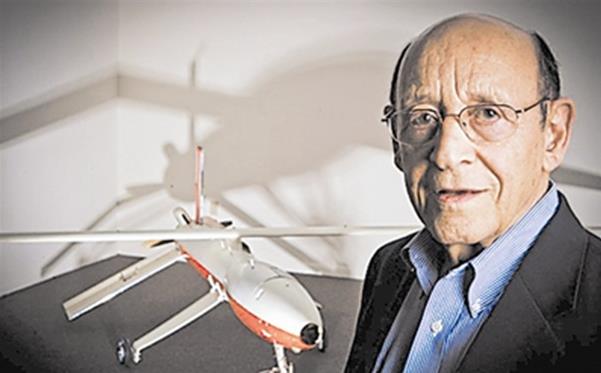
A Jewish couple gave birth to Abraham Karem in Baghdad. He was born and raised in Israel before his family relocated there in 1951.
From an early age, he had a natural passion for aviation. At the age of 14, he began creating model airplanes under the influence of his teacher, a World War II pilot.
The Technion employed him as an aeronautical engineer. His first drone, made for the Israeli Air Force, was constructed during the Yom Kippur War. The drone was employed to combat Russian air defense systems installed in Egypt and Syria.
He established Leading Systems Inc. after immigrating to America in 1977. in his garage.
Due to reliability issues and the substantial amount of manpower required to fly them safely at the time, the Pentagon almost gave up on unmanned aircraft. To fly a single UAV required 30 crew members.
Karem thought that using only modern technology wouldn’t be sufficient to solve the issue. Integrated subsystems and a better design, in his opinion, were the answers.
He started building his first drone, Albatross, which attracted DARPA’s attention after flying for more than 56 hours. He was given money to expand his research.
Then he created a more advanced version of the Albatross and gave it the name “Amber.” This drone later evolved into the Predator drone, earning him the moniker “DroneDaddy.”
Related Reading: Who Invented Drone?
A Brief History Of Drones (9 Milestones)
Unmanned aerial vehicles (UAVs) are aircraft that are crew- and passenger-free. They could be robotic drones or remotely controlled vehicles (RPVs). UAVs can fly for extended periods of time at a limited height and speed, and they are used in a variety of aviation-related fields.
In Britain and the United States, the first pilotless cars were developed. during the British aerial infantry, known as the Aerial Goal, first flew in March 1917 while American aerial infantry, known as the Kettering Bug, first took to the skies in October 1918. Despite both showing promise in in-flight tests, neither was operationally employed during the conflict.
Testing and development of uncrewed aircraft continued throughout the interwar period. The British produced a large number of radio-controlled aircraft in 1935 to be used as training targets.
The term “drone” is thought to have started to be used at this point, inspired by the namesake of these versions, the DH.82B Queen Bee. U.S. manufacturers produced radio-controlled drones. and used for target practice and coaching.
The Vietnam War saw the initial widespread use of reconnaissance UAVs. Additionally, drones began to be used for a variety of distinct tasks, including serving as decoys in battle, launching missiles at immovable targets, and dispersing leaflets for psychological operations.
Other countries besides the UK and the USA began to emerge following the Vietnam War. started to research unmanned aerial engineering. The complexity of the new versions increased along with their endurance and ability to maintain higher altitudes. Models have been created over the past few years that attack longer other flights using technology like the solar capacity.
Finally, drones serve a variety of functions, including monitoring climate change, conducting research after natural disasters, taking pictures and videos, and delivering goods. The army uses them for reconnaissance, surveillance, and targeted attacks, which is a well-known and controversial use.
The United States has clearly improved its use of drones since the 9/11 terrorist attacks. In areas and on terrain where soldiers cannot safely move, they are primarily used for surveillance. However, they are also used as weapons and have been linked to the deaths of alleged militants.
Concerns about the reliability of this kind of weaponry have been raised by their use in current conflicts and above some countries, especially when it results in the deaths of civilians, possibly as a result of inaccurate information or because they are close to a target.
First Quadcopter
1907: The first quadcopter was made by the Breguet brothers, two inventors. They collaborated with Professor Charles Richet, a controversial Nobel laureate. Although fascinating, it had drawbacks.
It took four men to secure it, and it was unsteerable. It rose two feet off the ground during its initial flight. In fact, it was the invention of the modern quadcopter. Each journey must begin somewhere, right?
The First Military Drones
1917: The Ruston Proctor Aerial Goal was the first pilotless winged aircraft ever, taking off just 16 years after the Wright Brothers’ ground-breaking Kitty Hawk flight. As a result of Nikola Tesla’s R.C.C. technology, it turned out to be a radio-controlled pilotless aircraft.
The Aerial Goal wanted it to act like a flying bomb that could be piloted toward adversaries. Although it made a good first impression, the AT was never actually used in a battle. However, it paved the way for related projects like the amazing Kettering Bug and provided a platform for the development of military drones.
1943: Fritz X was the name given to the FX-1400, the first operational remote-controlled weapon, which was designed for use by the German army during World War II.
This wasn’t just the first military drone to be set up properly; it was also the precursor to modern anti-ship missiles and other precision-guided weapons. It was a 2,300-pound bomb that had been used to sink boats during combat.
Boom In RC Planes
1960s Thanks to advancements in transistor technology, customers could now buy miniature radio-controlled components for a fair price.
The number of R.C.C. aircraft increased in the United States. These R.C.C. planes were mostly assembled from kits and came in a variety of sizes, from larger outdoor versions to smaller indoor models.
This was the first instance of the market and community that developed for consumer drones half a century later.
The First Drone-Armed Strike
2001: Following 9/11, the C.I.A. started flying armed drones over In the fight against the Taliban, Afghanistan has been involved. The first C.I.A. drone-based kill surgery took place in February 2002 when an unmanned Predator drone was used to target a suspect thought to be Osama bin Laden.
But it turned out to be an innocent man named Daraz Khan who was outside gathering scrap metal. Concerns over the use of drones in conflict, which still exist today, were sparked by incidents like this.
Faa Creates Commercial Drone Permits
2006. The FAA issued the first permits for commercial drone use. Certain limitations on the use of consumer drones for recreational purposes have been lifted thanks to these permits.
For professionals and businesses looking to use drones in micro business ventures, this created new opportunities. There weren’t many industrial drone permits necessary at first. This number does, however, quickly rise.
Here Comes The Parrot AR Drone
2010: The first drone that was ready to fly and could only be operated by Wi-Fi with a smartphone was the Parrot AR Drone, which was unveiled by the French company Parrot.
The drone received the 2010 C.E.S. after enjoying almost immediate commercial and critical success. Digital gaming hardware received an innovation award, and half a million parts were sold. Even the company’s AR Drone 2.0 outperformed the original by using a simpler piloting system, which made it much simpler for beginners to learn and use.
Amazon Prime Air
2013 Jeff Bezos’ concept video for a drone-based shipping platform was published by Amazon in December 2013. Although not the first to investigate drone delivery, the retail behemoth was.
In a 60 Minutes interview, Bezos discussed the potential for half-hour delivery using technology. This seems to be science fiction. He clarified that it isn’t.
Bezos estimated that the technology would be available in about 50 years. Later, Amazon clarified that some modifications to national regulations would be necessary for unmanned deliveries.
The Lily Drone Disaster
2015: The consumer drone industry is continuing to grow. Not everything was perfect, though. The disaster involving the Lily Camera drone was perhaps the biggest letdown, and it is still likely to leave some people with a bad taste in their mouths.
Despite receiving $34 million in pre-orders, the original company that developed this flying camera ended up declaring bankruptcy and shutting down as a result of numerous delays. Many drone enthusiasts found this to be a challenging lesson to learn.
Arrival Of King Dji
2016: one of the best drone manufacturers on the market, Computer vision and machine learning innovations were introduced by DJI’s Phantom 4.
As a result, it was no longer limited to monitoring people, animals, or objects after a G.P.S., but could also avoid obstacles and monitor them proactively. signal. The ensuing UAV marked a turning point for drone photography and consumer drones in general.
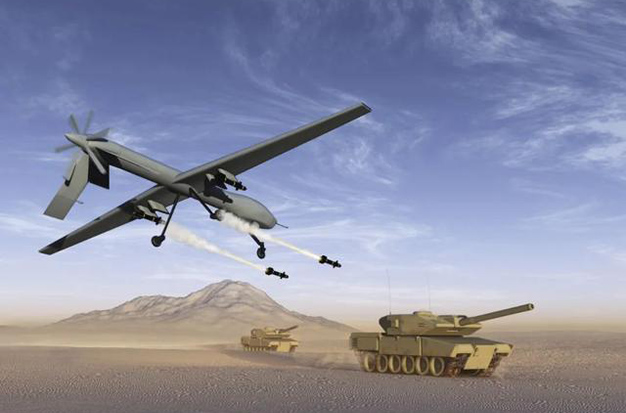
How Will Drones Develop In The Future?
Drone technology appears to have a very bright future. The global drone market is expected to expand significantly over the following few years, according to Gartner.
Business Insider, for example, expects global shipments of drones to rise to 2.4 million by 2023 — that is a 66.8% compound annual growth rate.
“The four major enterprise market segments will see drone growth, including Agriculture, building and mining, insurance, and media and telecommunications, he told Business Insider.
Drones are anticipated to get lighter, smaller, and have significantly longer flight times and battery lives for military applications. Additionally, improvements will be made to further enhance the capabilities of drones, including their optics. In the civilian market, advancements in flight times are enabling them to serve as delivery platforms, for use in emergency services, and for data collection in a number of areas too risky for humans, like in power plants or fires.
In some nations, drones have also been used to control crowds and secure homes. Authorities in some areas are likely to keep using drones for this kind of surveillance, despite this worrying development.
The future of drones is also likely to be greatly influenced by miniaturization. The size of drones will significantly decrease as components get smaller and smaller.
It is not improbable that military and commercial/industrial applications for micro-drones will become commonplace in the not-too-distant future. Similar to the recent pocket-sized drones that the United States recently ordered. Army.
Who knows, perhaps microscopic drones won’t be too far off.
Drones will be able to make decisions on their own, independent of human input, thanks to advancements in flight control algorithms, machine vision, and onboard processing power. This will speed up their reaction times and increase their responsiveness.
Despite the enormous potential for drones to be used as weapons, some groups have questioned the morality of this kind of remote weaponry given the possibility of mistakes leading to the deaths of civilians due to incorrect data.
While some contend that UAVs pose a risk to privacy and safety, others think that this is outweighed by the positive uses they could be put to. Regardless of viewpoints, it is anticipated that the number of drones will grow as they develop in intelligence and capability, find use in a wider range of industries, and fill a wider range of roles in the future.
